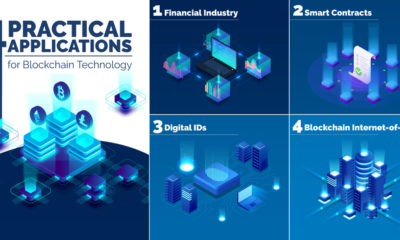Remarks at the Yahoo Finance All Markets Summit: Crypto
Thank you Andy. I am pleased to be here today.[1] This event provides a great opportunity to address a topic that is the subject of considerable debate in the press and in the crypto-community – whether a digital asset offered as a security can, over time, become something other than a security.[2]
To start, we should frame the question differently and focus not on the digital asset itself, but on the circumstances surrounding the digital asset and the manner in which it is sold. To that end, a better line of inquiry is: “Can a digital asset that was originally offered in a securities offering ever be later sold in a manner that does not constitute an offering of a security?” In cases where the digital asset represents a set of rights that gives the holder a financial interest in an enterprise, the answer is likely “no.” In these cases, calling the transaction an initial coin offering, or “ICO,” or a sale of a “token,” will not take it out of the purview of the U.S. securities laws.
But what about cases where there is no longer any central enterprise being invested in or where the digital asset is sold only to be used to purchase a good or service available through the network on which it was created? I believe in these cases the answer is a qualified “yes.” I would like to share my thinking with you today about the circumstances under which that could occur.
Before I turn to the securities law analysis, let me share what I believe may be most exciting about distributed ledger technology – that is, the potential to share information, transfer value, and record transactions in a decentralized digital environment. Potential applications include supply chain management, intellectual property rights licensing, stock ownership transfers and countless others. There is real value in creating applications that can be accessed and executed electronically with a public, immutable record and without the need for a trusted third party to verify transactions. Some people believe that this technology will transform e-commerce as we know it. There is excitement and a great deal of speculative interest around this new technology. Unfortunately, there also are cases of fraud. In many regards, it is still “early days.”
But I am not here to discuss the promise of technology – there are many in attendance and speaking here today that can do a much better job of that. I would like to focus on the application of the federal securities laws to digital asset transactions – that is how tokens and coins are being issued, distributed and sold. While perhaps a bit dryer than the promise of the blockchain, this topic is critical to the broader acceptance and use of these novel instruments.
I will begin by describing what I often see. Promoters,[3] in order to raise money to develop networks on which digital assets will operate, often sell the tokens or coins rather than sell shares, issue notes or obtain bank financing. But, in many cases, the economic substance is the same as a conventional securities offering. Funds are raised with the expectation that the promoters will build their system and investors can earn a return on the instrument – usually by selling their tokens in the secondary market once the promoters create something of value with the proceeds and the value of the digital enterprise increases.
When we see that kind of economic transaction, it is easy to apply the Supreme Court’s “investment contract” test first announced in SEC v. Howey.[4] That test requires an investment of money in a common enterprise with an expectation of profit derived from the efforts of others. And it is important to reflect on the facts of Howey. A hotel operator sold interests in a citrus grove to its guests and claimed it was selling real estate, not securities. While the transaction was recorded as a real estate sale, it also included a service contract to cultivate and harvest the oranges. The purchasers could have arranged to service the grove themselves but, in fact, most were passive, relying on the efforts of Howey-in-the-Hills Service, Inc. for a return. In articulating the test for an investment contract, the Supreme Court stressed: “Form [is] disregarded for substance and the emphasis [is] placed upon economic reality.”[5] So the purported real estate purchase was found to be an investment contract – an investment in orange groves was in these circumstances an investment in a security.
Just as in the Howey case, tokens and coins are often touted as assets that have a use in their own right, coupled with a promise that the assets will be cultivated in a way that will cause them to grow in value, to be sold later at a profit. And, as in Howey – where interests in the groves were sold to hotel guests, not farmers – tokens and coins typically are sold to a wide audience rather than to persons who are likely to use them on the network.
In the ICOs I have seen, overwhelmingly, promoters tout their ability to create an innovative application of blockchain technology. Like in Howey, the investors are passive. Marketing efforts are rarely narrowly targeted to token users. And typically at the outset, the business model and very viability of the application is still uncertain. The purchaser usually has no choice but to rely on the efforts of the promoter to build the network and make the enterprise a success. At that stage, the purchase of a token looks a lot like a bet on the success of the enterprise and not the purchase of something used to exchange for goods or services on the network.
As an aside, you might ask, given that these token sales often look like securities offerings, why are the promoters choosing to package the investment as a coin or token offering? This is an especially good question if the network on which the token or coin will function is not yet operational. I think there can be a number of reasons. For a while, some believed such labeling might, by itself, remove the transaction from the securities laws. I think people now realize labeling an investment opportunity as a coin or token does not achieve that result. Second, this labeling might have been used to bring some marketing “sizzle” to the enterprise. That might still work to some extent, but the track record of ICOs is still being sorted out and some of that sizzle may now be more of a potential warning flare for investors.
Some may be attracted to a blockchain-mediated crowdfunding process. Digital assets can represent an efficient way to reach a global audience where initial purchasers have a stake in the success of the network and become part of a network where their participation adds value beyond their investment contributions. The digital assets are then exchanged – for some, to help find the market price for the new application; for others, to speculate on the venture. As I will discuss, whether a transaction in a coin or token on the secondary market amounts to an offer or sale of a security requires a careful and fact-sensitive legal analysis.
I believe some industry participants are beginning to realize that, in some circumstances, it might be easier to start a blockchain-based enterprise in a more conventional way. In other words, conduct the initial funding through a registered or exempt equity or debt offering and, once the network is up and running, distribute or offer blockchain-based tokens or coins to participants who need the functionality the network and the digital assets offer. This allows the tokens or coins to be structured and offered in a way where it is evident that purchasers are not making an investment in the development of the enterprise.
Returning to the ICOs I am seeing, strictly speaking, the token – or coin or whatever the digital information packet is called – all by itself is not a security, just as the orange groves in Howey were not. Central to determining whether a security is being sold is how it is being sold and the reasonable expectations of purchasers. When someone buys a housing unit to live in, it is probably not a security.[6] But under certain circumstances, the same asset can be offered and sold in a way that causes investors to have a reasonable expectation of profits based on the efforts of others. For example, if the housing unit is offered with a management contract or other services, it can be a security.[7] Similarly, when a CD, exempt from being treated as a security under Section 3 of the Securities Act, is sold as a part of a program organized by a broker who offers retail investors promises of liquidity and the potential to profit from changes in interest rates, the Gary Plastic case teaches us that the instrument can be part of an investment contract that is a security.[8]
The same reasoning applies to digital assets. The digital asset itself is simply code. But the way it is sold – as part of an investment; to non-users; by promoters to develop the enterprise – can be, and, in that context, most often is, a security – because it evidences an investment contract. And regulating these transactions as securities transactions makes sense. The impetus of the Securities Act is to remove the information asymmetry between promoters and investors. In a public distribution, the Securities Act prescribes the information investors need to make an informed investment decision, and the promoter is liable for material misstatements in the offering materials. These are important safeguards, and they are appropriate for most ICOs. The disclosures required under the federal securities laws nicely complement the Howey investment contract element about the efforts of others. As an investor, the success of the enterprise – and the ability to realize a profit on the investment – turns on the efforts of the third party. So learning material information about the third party – its background, financing, plans, financial stake and so forth – is a prerequisite to making an informed investment decision. Without a regulatory framework that promotes disclosure of what the third party alone knows of these topics and the risks associated with the venture, investors will be uninformed and are at risk.
Source/More: SEC.gov | Digital Asset Transactions: When Howey Met Gary (Plastic)














